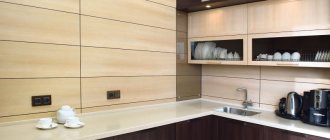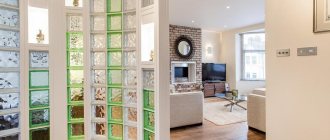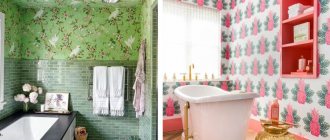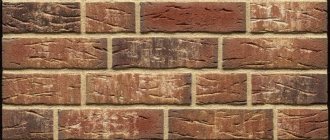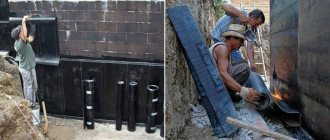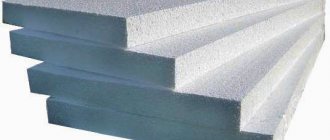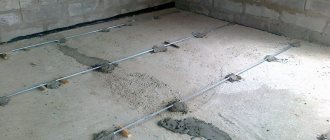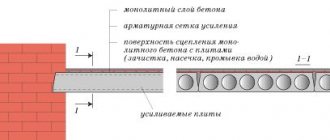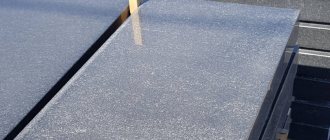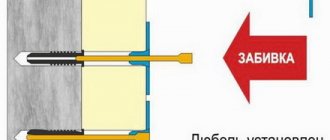What is flexible stone?
To understand how to produce finishing, you need to understand what the material is and how it is produced.
From the name it is clear that the stone is soft. It can bend, is suitable for covering irregularly shaped surfaces, and is relatively easy to work with (compared to other natural materials). But how did manufacturers manage to achieve such an effect?
Flexible stone photo colors
About composition and varieties
This decorative material was developed in Germany about ten years ago. It is known as flexible (or soft) stone, flexible sandstone, stone veneer or stone wallpaper, and is notable not only for its appearance, but also for its method of manufacture and use. The facing material consists of the following three layers:
- The basis. Special textile backing or non-woven fabric (agrocanvas).
- Adhesive substance. A polymer (acrylic), which has binding properties, fixes the outer layer and gives flexibility.
Imitation brickworkSource img.aviarydecor.com
Decorative layer. Fine chips obtained from natural sandstone, quartz, marble or granite; does not crumble, does not fade or crack.
The flexibility of the material is ensured by the fact that a small gap is maintained between the crumb particles. Manufacturers offer the material in roll or tile format.
In interior design, tiles in formats from 200x300 to 950x1200 mm are in demand. The length of stone wallpaper varies between 2-4 m, the width varies within a meter.
Thickness of soft stoneSource art-tse.by
Kinds
Flexible wall stone is available in 3 main formats.
Wallpaper
The largest option. The canvases are 1-1.2 m wide and 2-2.8 m long. Used as a flexible stone for interior decoration when working with large surfaces. The wallpaper coating is the thinnest, the layer barely reaches 3 mm.
Tile
Compact size stone pieces (20*30, 30*60, 40*80 cm) are suitable for decorating similarly small areas. For example, a kitchen apron, shower stall, etc. Decorative spraying of 2-3 mm means that it can only be used inside the apartment.
The photo shows soft stone tiles
Panels
Sheets, about 2.5 meters in size, replace tiles and wallpaper at the same time. The main difference between the slabs and both is the thickness of the coating, which reaches up to 6 mm. Suitable for finishing facades with flexible stone and for outdoor use.
Important! The average weight per square meter is 3.5 kilograms. This fact opens up new possibilities for decorating walls with flexible stone - for example, it can be used on weak structures, such as drywall.
The photo shows an example of sandstone tiles
Disadvantages of the material
What are the disadvantages of flexible stone? Customer reviews clearly indicate unavailability. The cost of finishing materials made from sandstone is quite high. Very rarely, a client with an average income can afford to buy expensive building materials.
Based on consumer reviews, it becomes clear that flexible stone has disadvantages. The photo below reflects the dynamics of changes in the price of the material.
1 square meter of flexible stone will cost from 1,500 rubles, but the result is worth it. You can find cheaper material, the cost of which starts from 800 rubles per 1 m2, but it is better to give preference to quality products from a trusted supplier.
Considering the price range from the point of view of the price ratio between flexible and natural stone, it can be noted that the cost of the former is quite acceptable, taking into account its quality. A finishing element that has no equal is flexible stone. The disadvantages and features of the material are due to its characteristics, and the latter cover the existing disadvantages. By weighing the advantages and disadvantages, you can form an idea of whether you should choose such a material or not.
Flexible stone is practical to use; its disadvantages are not so significant as to give preference to alternative finishing methods.
Application options in the interior
It is most often used in wall decoration on objects. Moreover, unlike tiles or porcelain stoneware, stone is appropriate not only in bathrooms, kitchens, and hallways. Its original appearance can fit perfectly into the living room and even the bedroom.
Although it is best suited for wet rooms: the breathable surface does not allow condensation to accumulate, protects against the formation of fungus and mold, and helps maintain a favorable microclimate.
Flexible stone in the interior photo of the office
The use of flexible stone in the interior is not limited exclusively to vertical surfaces. It is also used for:
- Replacing flooring. Floor finishing with flexible stone can be done both in bedrooms or living rooms, and in more actively used rooms: corridors, bathrooms, kitchens. It can withstand high loads and last for many years.
- Decoration of the fireplace area. Unlike artificial stone, natural stone can easily withstand high temperatures up to 600-650C. Therefore, it will not melt or deteriorate from the heat of the stove or fireplace.
- Refinement of columns, rounded ledges, arches. Each apartment and house has its own architectural features: if a fortifying column has formed in one of the rooms, the easiest way to give it a decorative look is with the help of flexible stone.
- Decoration of stairs. Stone steps are a symbol of luxury. But they don’t have to be made entirely from expensive wood. You can save a lot by simply covering a concrete staircase with decorative plates.
Application area
See also
Painting the facade of a house with your own hands: simple technologies
Despite the fact that we are talking about facade materials, in the case of flexible stone it can be used for exterior and interior decoration.
Moreover, its spread in interior work turned out to be very serious.
The properties of the products allow them to feel great in conditions of high humidity and high temperature.
It can be said that flexible stone can be used for:
- facades;
- internal walls;
- arch trim;
- columns;
- doorways;
- window openings;
- balconies.
It is actively used where one wants to achieve a visual resemblance to stone cladding or brickwork.
The most important advantage of the material in question is that flexible stone will not put any special load on the façade.
The characteristics of flexible stone allow it to be used as cladding for fireplaces and furnaces.
Yes, if in that area the heating is higher than the maximum 600-650 degrees Celsius, then it is better to install a layer of auxiliary insulation.
This is an excellent alternative to natural stone to clad the facade of a house. Due to its features, the material, it seems to me, will quickly conquer the market, since for now it is still a newcomer, and many treat it with increased caution.
But don't be afraid. Especially if these are products made in accordance with all requirements and standards. It is durable, natural, incredibly beautiful. And installation should not cause any special problems.
How does it look in different rooms?
In bathrooms, if the budget allows, flexible stone is used to completely finish the walls and floors. If you don't want a stone room, combine flexible stone with paint, mosaic or wallpaper (in dry areas).
In the kitchen, a stone apron is most often made: it is not afraid of high temperatures, is easy to wash off grease, and looks impressive. To prevent the area above the work surface from looking too tacky, highlight the dining area with flexible stone.
In living rooms they make entire figurative compositions: you can depict mountains or any abstract figure. They are mainly used as a background for a TV or to decorate the surface behind the sofa.
The photo shows stone walls in the living room
Stone on the walls looks no less impressive in a study: it gives solidity and seriousness to the owner of the room and emphasizes good taste.
You can veneer niches or partitions. For example, use a niche for video equipment mounted to hide the wires.
Criteria for choosing natural stone for finishing
Aesthetics. The buyer selects stones in accordance with his own preferences; fortunately, the variety of rocks, shapes and colors will please the most demanding client.
Strength and durability. Characteristics inherent in all of the above materials. The minimum service life of stone is 50 years, while neither wood nor siding can compete with the strength of stone material and its ability to maintain its original appearance for many years.
Fire resistance
A property inherent in all natural stones, which is especially important if the house is built using combustible materials. Presentability
Natural stone is an elite, expensive material, the masonry from which looks excellent
Presentability. Natural stone is an elite, expensive material, the masonry from which looks excellent
This finish makes an impression and creates a special atmosphere.
offers facing stone at a competitive price. You can buy goods wholesale and retail. All products are certified. Delivery throughout Moscow and the region is provided. For any questions, please contact our manager by phone +7 (495) 532-90-92.
Installation recommendations
- Since the material in any form is quite thin, the surface should be carefully prepared. Remove remnants of old coatings, level, prime.
- To ensure that the seams remain invisible, glue the material end-to-end or overlapping, and then heat it with a hair dryer and smooth it out.
- Use special acrylic or tile adhesive - both options do an excellent job and can hold the stone in place for a long time.
- When working with several elements, first lay them out in the desired order on the floor, then transfer them to the desired surface - this way you will get the desired pattern.
Were you looking for an easy-to-use, but at the same time high-quality and durable material? Here he is! Having discovered this material, you understand: it’s not for nothing that designers all over the world love the soft stone.
Independent production
Making flexible stone with your own hands is a simple process. There are several methods that require different investments.
The easiest way
You will need a base (substrate) and pebble acrylic plaster. For the backing, any low-stretch material is used (it is best to use fiberglass).
The plaster is selected according to the color, size and shape of the pebbles. It is applied to the base according to the instructions. Allow time to dry - the flexible stone is ready. It is cut into pieces of the required size. To make the product bend better, it is heated with a hairdryer.
There is room for creativity when making. When using various additives, an imitation of natural stones is obtained. Before use, the fiberglass fabric is fired to remove the wax deposits formed as a result of its production.
Second way
Take any glass and rub it with wax. If you use a relief surface wrapped in polyethylene, the texture of the flexible stone will not be smooth. A composition is prepared, which is based on quartz sand, small granite fractions or marble chips.
Marble chips are one of the components of the composition for making tiles
These ingredients are mixed with polyester resin or polymer acrylic dispersions. The finished composition is applied to the glass and rolled with a roller. The product is ready in 24 hours. It is removed from the glass and cut to the required sizes. The material is not very durable, so you should work with it carefully.
To add strength, you can apply several layers of sealant on the back side - fiberglass, gauze or mesh for plaster.
Plastisol based method
The technological process order is as follows:
- a thin layer of plastisol (3 mm) is applied to a piece of glass;
- a fine-mesh mesh for plaster is placed on top;
- marble chips (or other mineral) are evenly laid out on the prepared base and rolled out with a roller;
- the layer is placed in an electric oven for 15 minutes;
- Cool the product, shake off any loose crumbs and remove from the glass.
By the way, if you use crushed brick or a mixture of sand with cement and coloring pigments instead of crumbs, you get interesting options.
Coloring pigment for tiles
New ways of producing flexible stone with your own hands will continue to appear, because this allows you to make the material to your taste, giving free rein to your imagination, while significantly reducing the cost of finishing.
